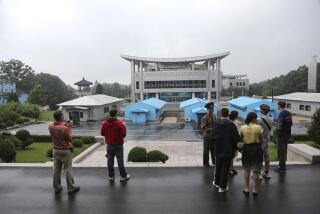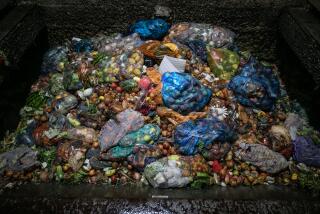Aid the Starving, Not the Elite
- Share via
As famine casts a lengthening shadow over North Korea, the United States is increasing its emergency shipments of food, this time with 50,000 metric tons of corn intended to feed 2.4 million children under the age of 6. This latest donation brings to $33.4 million the value of U.S. food provided since late 1995, when Pyongyang first acknowledged severe shortages and appealed for international help. That aid, which is being organized by the U.N. World Food Program, is vital. No less essential is rigorous international oversight to make sure the food is fairly apportioned and not destined only for the elite of the last Stalinist state.
Suspicions about equitable food sharing are inevitable, given the tight controls maintained by Kim Jong Il’s regime. World Food Program inspectors last month found the typical diet in the North Korean countryside to be little more than a single bowl of rice supplemented by dried vegetable leaves, ground corncobs and ground sweet potato stalks. A harrowing account of conditions in North Korea, reported by Times correspondent Sonni Efron from a vantage point in neighboring China, makes clear that even this description may overstate what people can expect. Chinese travelers as well as North Koreans who were able to cross the border tell of mass deaths from starvation and exposure, as well as many family suicides.
Whether these appalling conditions will help to moderate North Korea’s confrontational foreign policy is a key question. Washington has avoided tying food aid to political change but clearly hopes a link can be made. Pyongyang’s willingness to at least talk with Seoul and Washington about negotiating a formal end to the Korean War is moderately encouraging. Meanwhile, a country of 23 million remains in desperate need of humanitarian aid. The imperative for donor states is to make sure the help they give reaches those who most need it.
More to Read
Sign up for Essential California
The most important California stories and recommendations in your inbox every morning.
You may occasionally receive promotional content from the Los Angeles Times.










